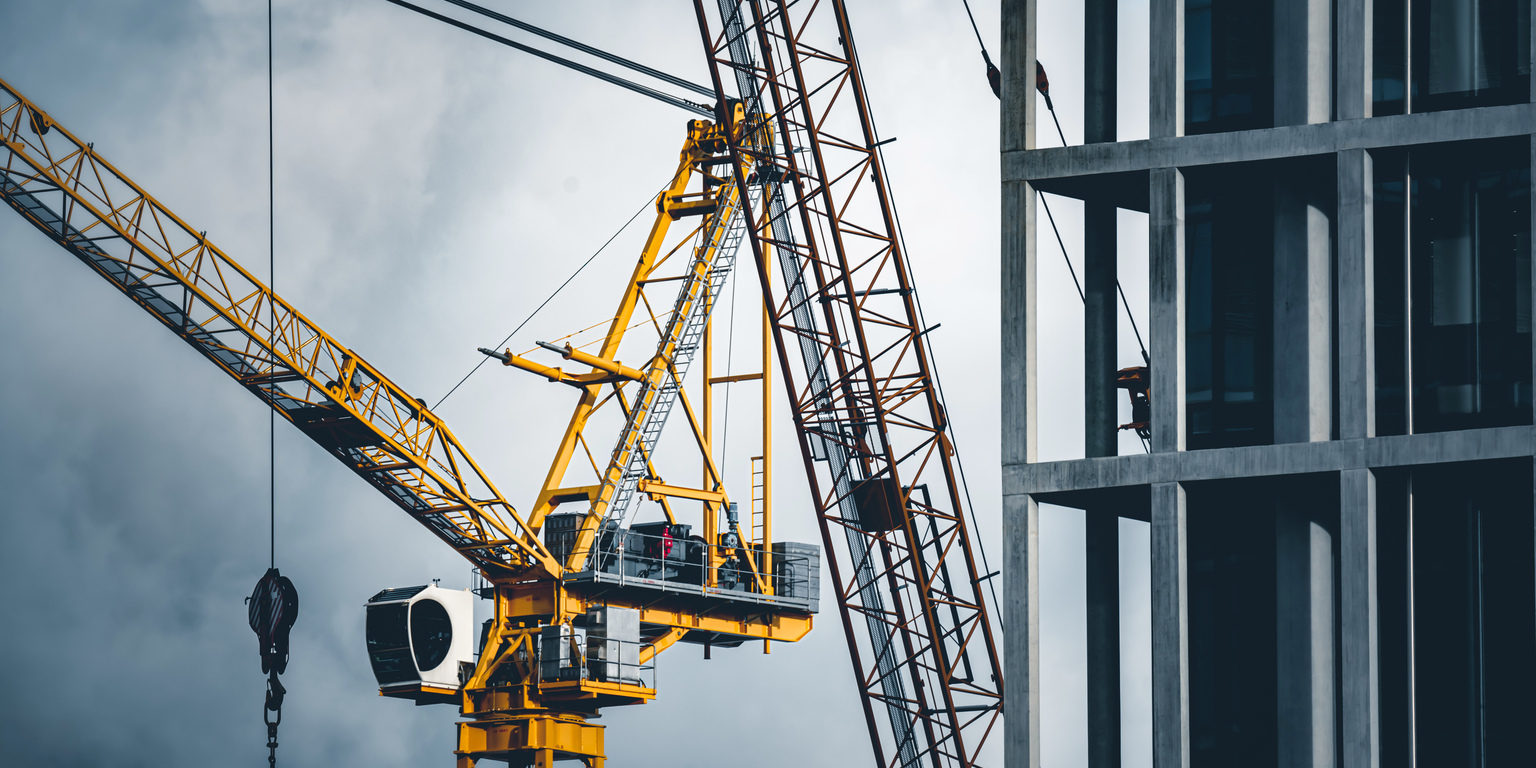Every crane lift, whether a simple repositioning or a complex construction manoeuvre, hinges on the precise and secure connection between the crane and its cargo. Even if you are a project manager overseeing the operation but not operating the crane yourself, grasping the principles of safe rigging is essential for reducing risks to surrounding buildings, equipment and, most importantly, anyone in the vicinity.
In this guide, we will delve into the basics of crane rigging, helping you to understand the importance of proper rigging, learn about essential rigging equipment and the key steps of the rigging process.
What Is Crane Rigging?
The primary function of crane lifting and rigging is to transport important equipment and materials into areas where they are accessible to workers. This process eliminates the need to transport heavy equipment and materials manually, which can be difficult and dangerous.
Crane rigging refers to the specific methods and equipment used to connect a load to a crane. This process involves selecting and using various rigging components, such as slings, shackles, hooks, and wire ropes, to create a secure connection before lifting can commence.
When rigging a crane for a lift, various factors must be carefully considered to determine the appropriate rigging configuration. These include the load’s weight, shape, and centre of gravity. Once the correct configuration has been confirmed, the crane rigging process involves attaching slings to the load, connecting them with shackles, and ensuring a balanced lift.
Rigging is a highly technical skill that requires a great deal of knowledge of different rigging gear, equipment load capacities, and equipment limitations, ensuring safe practices are maintained from start to finish.
The Importance of Correct Crane Rigging
Improper crane rigging and lifting creates many dangers and hazards that put people and structures at risk of harm or damage. That’s why crane lifting and rigging operations must follow specific safety procedures to maintain a safe working environment.
First and foremost, incorrectly rigged loads can swing unpredictably, drop, or cause the crane to tip, potentially leading to severe injuries or even fatalities.
Understanding load dynamics is crucial, as incorrect rigging often results in uncontrolled load movement. If the centre of gravity isn’t properly assessed, the load can swing violently or tip, endangering workers and surrounding structures.
Moreover, improper rigging puts excessive stress on equipment. Overloading slings, shackles, or the crane itself can lead to failures, which can have devastating consequences.
Finally, proper rigging improves efficiency. A well-planned and executed lift minimises delays, reduces equipment wear, and ensures a smooth, productive workflow.
Essential Crane Rigging Equipment
Executing a safe and efficient rigging and lifting operation requires a range of specialised rigging equipment. Components such as slings, shackles, ropes and hooks play important roles in securing and lifting the load.
Slings
Slings are the primary load-bearing connectors that support and lift loads by distributing the weight of the load evenly, reducing stress points and preventing damage.
They come in different types, including wire rope, chain, polyester, and nylon, each designed for different applications. Wire rope slings are highly durable and used for lifting heavy loads, while synthetic slings offer flexibility and are suitable for handling fragile materials.
Hooks and Shackles
Rigging hooks and shackles connect various components to ensure the load remains stable. Hooks attach slings or chains to the crane’s lifting mechanism and often have safety latches that prevent accidental disengagement during the lift.
A shackle is a component that connects lifting slings, ropes, and chains. They come in various types, such as bow shackles for multi-directional loads and D-shackles for straight-line lifts, ensuring a strong and reliable connection.
Wire Rope and Chains
Wire ropes and chains are vital for securing and supporting loads, ensuring they remain intact during the lifting process. Wire rope is made up of multiple strands of metal wire that are twisted together, making it strong, flexible and able to withstand high tension. Chains serve a similar purpose but are typically made of alloy steel and are used in heavy-duty lifts where a high level of durability is needed.
Pulleys and Blocks
Pulleys and blocks are mechanical devices used to reduce the effort required to lift heavy loads. Snatch blocks and sheave blocks contain grooved wheels that guide ropes or cables, redirecting the force applied to the load. Using multiple pulleys in a system reduces the lifting force needed, making the lifting more manageable and efficient.
Eye Bolts and Steel Nuts
Eye bolts are threaded fasteners featuring a loop, also known as an eye, at one end, providing a secure anchor point for crane rigging operations. They are commonly used to attach ropes, slings, or cables to a fixed structure or load. Steel nuts are used to secure the eye bolts in place, ensuring they remain tightly fastened during lifting. Shouldered eye bolts are designed for angled lifts, while plain eye bolts are best suited for vertical lifts.
Turnbuckles
Turnbuckles are essential for adjusting the length and tension of cables, ropes, or chains in rigging configurations. This enables riggers to either lengthen or shorten the connected ends, ensuring the correct tension for a stable and balanced lift.
Spreader Bar and Lifting Beam
Spreader bars and lifting beams are designed to evenly distribute the weight of a load, avoiding excessive strain on a single point. Spreader bars keep slings at a fixed distance, reducing pressure and ensuring stability when lifting long or irregularly shaped loads. Lifting beams, on the other hand, provide a central lifting point, which reduces the risk of tilting and makes the load easier to control.
The Crane Rigging Process
To ensure safety and prevent accidents, the crane must be correctly rigged and thoroughly inspected before initiating the lift. Below, we dive into the main phases of the crane rigging process so you know what to expect from each step.
1. Understanding Your Requirements
The first step in any rigging and lifting operation is understanding your requirements. You must choose a crane that meets your requirements regarding your material and workplace, as well as identify any risks that may impact your rigging operation. You should ensure that the crane’s load limitations are not exceeded by what you aim to lift.
Once you have your crane that is capable of lifting your materials, make sure to inspect it to ensure it is in good working condition and is safe to use.
2. Managing the Hitch
Understanding the hitch is one of the most important responsibilities of a crane rigger, as making a mistake here can result in damage to the load or harm to any nearby personnel.
Riggers must carefully consider the type of hitch which should be used, whether vertical, choker, or basket, based on the load’s shape, weight, and centre of gravity. They must also ensure that the sling angles are correct, as improper angles can increase tension and reduce the lifting capacity, leading to potential failure or instability.
3. Handling the Load
The load must be securely fastened to the hook, ensuring the sling is properly tightened to prevent slips or overturning. At this stage, the lift must be classified as ordinary, pre-engineered, or risky, depending on its complexity and potential hazards. This classification determines the level of planning and precautions required. Once categorised, the crane operator must conduct a thorough inspection, verifying all rigging components and safety measures before approving the lift.
4. Hitching the Load
Securely hitch the load, ensuring catches are tight, well-positioned, and aligned with the centre of gravity. Properly tying and reinforcing the load to the jib and hook is crucial to prevent detachment, a leading cause of load slips and crane overturns. A well-secured hitch enhances stability and minimises risk during the lift.
Atlas Winch Hire & Hoist Services
Crane rigging is a fundamental aspect of lifting operations, ensuring safety, stability, and efficiency. From selecting the right slings to managing hitches and load balance, every step must be executed with precision.
For those in need of high-quality crane rigging and lifting equipment, we’re here to help! At Atlas Winch Hire & Hoist Services, we provide a wide range of winches, rigging equipment, and lifting accessories. Our expertly maintained equipment and knowledgeable team provide reliable solutions to a wide range of industries, ensuring safe and effective lifting operations every time.
For more information about our rigging and lifting solutions or for assistance in finding the right equipment for your project, get in touch today!








